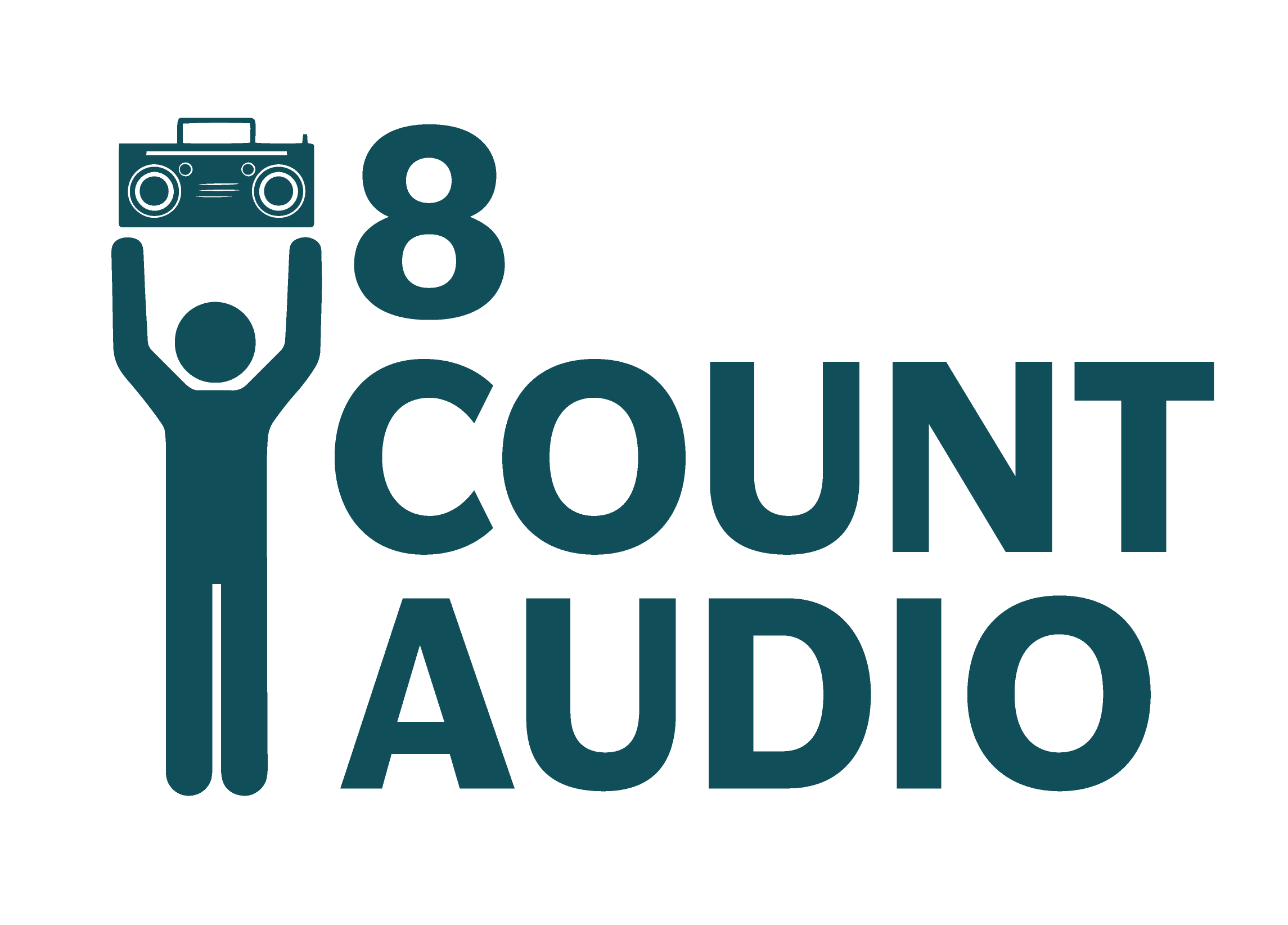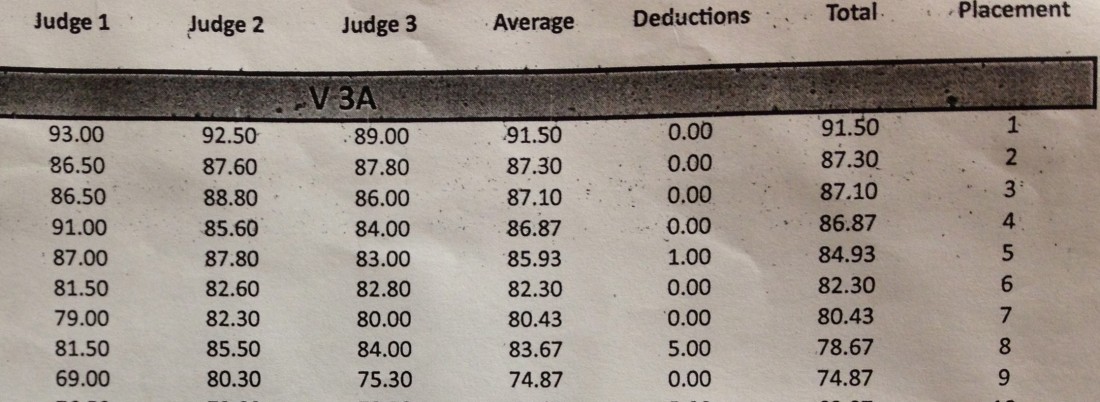3A Qualifiers Ranked by Z Score
Is there a way to compare sectional scores? Probably not, but here’s an attempt.
by Norm Ramil / 8ca.team.leader and dance.fan
Every year we come out of sectionals with the same question: where does my team stand versus a qualifier from a different sectional?
One way might be to rank the scores of all 30 qualifiers in 3A, but that’s only a very rough snapshot. Maybe not even a snapshot; more like a blurry copy of a copy, printed on a printer that’s begging for a new ink cartridge. First there’s the problem of different judging panels at each sectional site. A 4th place at Fouettetown is hard to compare to the 4th place team at Piqueville, obviously. And score-wise, 87.22 means different things at different places.
Then there’s the issue of how a site’s judges scored the entire field. A 91 is a great score. Let’s say the average score at your sectional was an 83. But how does a 91 at another sectional look if their average was 79?
Even averages don’t tell the whole story. What if the 91 brought the average way up? Or what if a couple really low scores skew your impression of the average?
Yikes. There’s no completely legit way to compare the scores heading to state. But I’m gonna try to, um, wander in the right direction.
So there’s this thing called a z-score. Supposedly it takes into account the different ranges of scores you see in different groups of numbers–like, say, a certain unpopular sectional qualifying system in a certain state that starts with an “I.” You put the scores of each sectional into its own spreadsheet and start taking into account not only the average but where the scores fall along “the curve.” Yeah, standard deviation and all that stuff.
Then you end up with raw scores transformed into “z scores.” They show how many standard deviations a score is above or below the average of that sectional. Throw all the z scores into a ranking table and you have a rough idea of how scores from different sectionals compare with each other. A rough idea.
And if you’re really into scores, we can wade deeper into the murky river! You can use a table (thanks, Google images!) to convert those z-scores into a percentile, if that floats your boat. I wouldn’t think of that percentile as a “score” even though it might look like one. We’re just looking for a firmer grip on where the qualifying dances might end up if you forced them onto a curve.
| Z-score rank | Team | Z-score @ sectional | Percentile using z-score | Rank at sectional | Score at sectional |
|---|---|---|---|---|---|
| 1 | Stevenson | 1.68941 | 95.4430 | 1st @ GN-2 | 93.23 |
| 2 | Warren | 1.50845 | 93.4280 | 2nd @ GN-2 | 91.90 |
| 3 | Minooka | 1.36529 | 91.3919 | 1st @ MS | 93.53 |
| 4 | Maine South | 1.30601 | 90.4226 | 1st @ GN-1 | 93.20 |
| 5 | Glenbrook South | 1.29485 | 90.2314 | 3rd @ GN-2 | 90.33 |
| 6 | Neuqua Valley | 1.29256 | 90.1918 | 1st @ GE | 85.83 |
| 7 | South Elgin | 1.27882 | 89.9520 | 1st @ HU | 93.60 |
| 8 | Huntley | 1.15204 | 87.5348 | 2nd @ HU | 92.80 |
| 9 | Waubonsie Valley | 1.13692 | 87.2214 | 2nd @ GE | 85.03 |
| 10 | Plainfield Central | 1.13692 | 87.2214 | 2nd @ GE | 85.03 |
| 11 | Andrew | 1.11578 | 86.7742 | 2nd @ MS | 92.27 |
| 12 | Edwardsville | 1.10786 | 86.6039 | 3rd @ MS | 92.23 |
| 13 | Prospect | 1.01228 | 84.4298 | 2nd @ GN-1 | 91.00 |
| 14 | Lake Park | 0.94953 | 82.8824 | 3rd @ GN-1 | 90.53 |
| 15 | St. Charles North | 0.93017 | 82.3858 | 3rd @ HU | 91.40 |
| 16 | York | 0.90547 | 81.7392 | 4th @ GN-1 | 90.20 |
| 17 | Naperville North | 0.88400 | 81.1652 | 4th @ GE | 83.73 |
| 18 | Lockport | 0.82469 | 79.5226 | 4th @ MS | 90.80 |
| 19 | Bartlett | 0.76060 | 77.6552 | 4th @ HU | 90.33 |
| 20 | Loyola | 0.76016 | 77.6420 | 4th @ GN-2 | 86.40 |
| 21 | Joliet West | 0.75143 | 77.3803 | 5th @ MS | 90.43 |
| 22 | Jacobs | 0.72890 | 76.6968 | 5th @ HU | 90.13 |
| 23 | Harlem | 0.67185 | 74.9160 | 6th @ HU | 89.77 |
| 24 | Sandburg | 0.62667 | 73.4562 | 6th @ MS | 89.80 |
| 25 | Whitney Young | 0.61458 | 73.0584 | 5th @ GN-2 | 85.33 |
| 26 | Oswego | 0.56104 | 71.2615 | 5th @ GE | 82.07 |
| 27 | Downers Grove North | 0.51829 | 69.7872 | 5th @ GN-1 | 87.30 |
| 28 | Wheaton Warrenville South | 0.46376 | 67.8590 | 6th @ GE | 81.57 |
| 29 | Fremd | 0.44753 | 67.2754 | 6th @ GN-1 | 86.77 |
| 30 | Morton | -0.20991 | 41.6869 | 6th @ GN-2 | 79.27 |
The z-score tells us about the relationship between a routine’s raw score and the average score at a certain sectional. The average is important because it gives us a feel for what that set of judges generally “thought” of that set of routines.
The z-score also factors in the point distance between a routine’s raw score and the average (since averages themselves might be misleading). This distance is interesting because it shows us a little something about how that set of judges viewed a certain dance in the context of all the others in that sectional. It’s definitely a different vibe than looking at only placements or scores.
So let’s take the highest-ranking z-score from Saturday, Stevenson’s 1.68941. That number shows how many standard deviations their score (93.23) is above the average at their sectional (in other words, in front of their other competitors and the same set of judges). Maine South (in a different sectional, though with the same judges) had a similar raw score (93.20). But taking into account their competitors’ scores and the range of scores (and how this all interacts with the average), you get different z-scores.
This example reveals that some parts of the table aren’t too interesting. These are two dances that are obviously going to battle for some high placements at state–and probably on Day 2.
But the numbers do become helpful if you’re trying to decide how to handle the 3A scores at Geneva, where the 1st place team was in the 85 range. Converting everything to z-scores lets us take that 85 and factor in the other dances at that sectional in order to get an idea of what the 85 meant there. Then we come out with a number that we can use if we want to see where that dance stands in the big picture. We all knew that that 85 should be looked at as something in the low 90s. But where? This doesn’t tell us exactly where, but it does show that the “Geneva 85” is something like the “Grayslake North-2 90.”
Definitely not a perfect translation. But at least we’ve got some numbers that try to take out the effect of different judging panels.
And even if the table doesn’t do it for you, can we all agree that we need to go to a different system? How about qualifying during the regular season based on a minimum score (like we used to do in Team Dance Illinois / TDI)? Or how about having teams perform in front of a single panel of judges (like we used to do in “supersectionals” in IDTA)?


